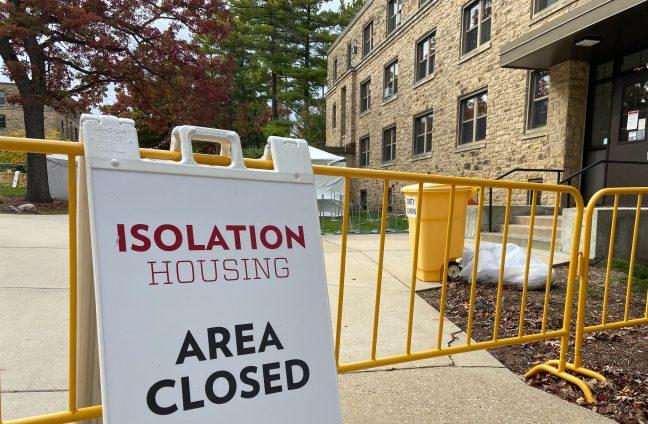Public Health Madison & Dane County announced Oct. 21 it would move to a crisis model of contact tracing, given a recent high of COVID-19 cases.
When there are over 150 new cases per day, PHMDC cannot keep up with contact tracing quickly enough to effectively disrupt the spread of COVID-19, PHMDC Director Janel Heinrich said in the announcement. Under the crisis model, PHMDC will prioritize notifying patients if they test positive before providing contact tracing, according to the announcement.
University of Wisconsin Geography Ph.D. student Chenxiao (Atlas) Guo spoke on the spike in cases.
“The third [COVID-19] peak started in late October and is still going on and arguably getting worse, with daily increases of about 250 on average,” Guo said. “Quite different from the previous patterns, this time we can barely figure out the outbreak ‘hot-spot’ spatially.”
Guo created an interactive dashboard of Dane County and Wisconsin that shows the density of COVID-19 cases spatially, as well as other relevant information such as total hospitalizations, new tests and deaths. The dashboard uses data from the Wisconsin Department of Health Services.
Temporally, there were two previous COVID-19 peaks in Dane County — one in late June when there were about 100 new cases per day, and the second in early to mid-September when there were about 200 new cases per day, according to Guo. The outbreak center for the first peak was located in downtown Madison around State Street while the outbreak center for the second peak was located around the east side of campus and the State and Johnson region, Guo said.
“The pandemic is rapidly spreading out to not only suburban areas, but also to pretty rural areas in all directions of Dane County, in which the north, east and northeast of Dane County are the worst currently,” Guo said. “Summarizing the pattern using text might evoke unnecessary panic, and that’s why the map itself matters.”
Guo said he hopes to see the dashboard playing a positive role in limiting the spread of COVID-19 by alerting people of high-risk areas to avoid or to take more protective actions within. For instance, the recent increase of cases in rural areas shows the broader importance of social distancing even in non-crowded areas, according to Guo.
PHMDC may be able to resume contact tracing — a tool that can also prevent spread — should case counts decline, according to the announcement. In addition to exceeding contact tracing capacity, the current high of cases caused a large number of Dane County hospitalizations, according to the PHMDC data dashboard.
Manager of Strategic Communications at UnityPoint Health – Meriter Leah Huibregtse said the hospital is in a much better place than last spring in terms of preparation.
“We’ve been able to learn more about COVID-19, how to treat it, how to prevent the spread, increase our PPE supply and learn from other hospitals who’ve experienced a surge,” Huibregtse said.
Still, it is challenging to care for an increasing number of COVID-19 patients, Huibregtse said. The biggest hurdle at Meriter is staffing — while they have enough beds, they need to work at ensuring they have a sufficient workforce able to care for all patients, according to Huibregtse.
Across the city, the hospital currently has about triple the number of COVID-19 positive patients they had in the spring peak, Huibregtse said. As of Oct. 30, there were a total of 131 COVID-19 inpatients and 34 COVID-19 patients in the ICU, according to the Dane County COVID-19 Dashboard.
“While much of COVID has been out of our control, stopping the spread is something that each of us does have control over,” Huibregtse said. “We need everyone to wear masks, physically distance and wash hands. As Public Health often says, ‘Act as though you’ve been exposed.’”
The pandemic has been long, but the only way to get through it is by working together and taking precautions seriously, Huibregtse said. People should continue limiting their gatherings, using curbside options and restricting extra trips out, according to Huibregtse.
Doctors brace for possible winter ‘twindemic,’ mix between viral flu, COVID-19
Compared to most other states that did not systematically organize publicly accessible COVID-19 data, Wisconsin has provided many datasets that include historic data, are updated frequently and are accurate to the census tract level, according to Guo. Wisconsinites should appreciate and take advantage of these unique resources, Guo said.
“In this tough time, staying together is so important,” Guo said. “I hope my platform will become another useful tool in our toolkits, together with the Wisconsin DHS website, PHMDC Dashboard and UW-Madison COVID Dashboard. People are undoubtedly supposed to follow the official guidance and authorized information.”
















